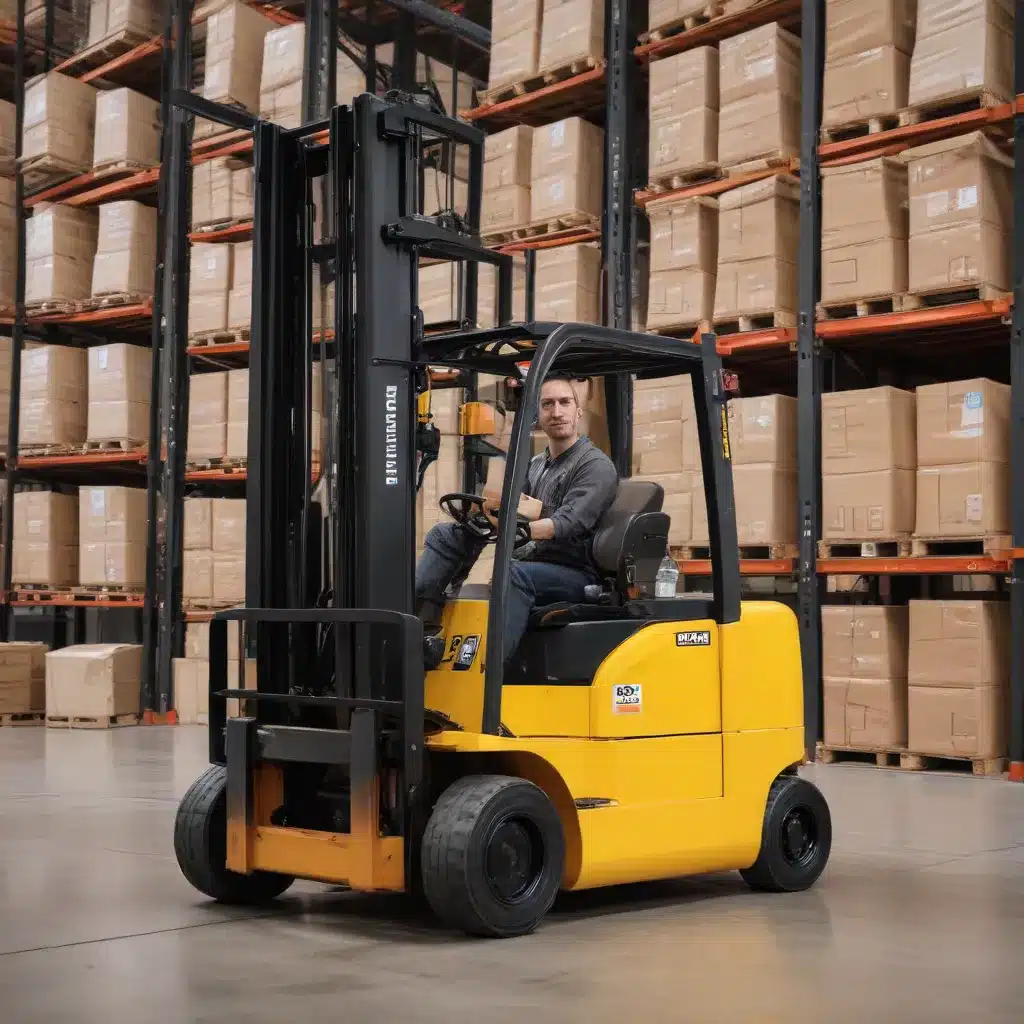
The Rise of Smart Sensors and Automated Warning Systems
Warehousing and industrial operations have seen a rapid increase in innovations that enhance the safety and efficiency of material handling equipment, particularly forklifts. As consumer demand continues to rise, the need for streamlined logistics and a greater focus on safety in the workplace has become paramount.
One of the groundbreaking innovations transforming forklift safety is the integration of smart sensors. These advanced sensors utilize a combination of ultrasonic, infrared, and radar technologies to detect obstacles, pedestrians, and other forklifts in the vicinity. By providing real-time data to the operator, smart sensors can alert them to potential hazards, significantly reducing the risk of collisions and improving overall workplace safety.
The smart sensor system works by interpreting data from the surrounding environment and triggering alerts when an obstacle is detected within a predefined range. These alerts can come in the form of visual indicators or audible alarms, allowing the operator to react quickly and take appropriate action. In some more sophisticated systems, the sensors can even initiate automatic braking or speed reduction on behalf of the operator, mitigating accidents caused by human error.
Complementing the smart sensor technology are automated warning systems, which enhance visibility and awareness for forklift operators. These systems often include features such as 360-degree cameras, proximity alarms, and blind-spot detection. By drawing the operator’s attention to blind spots and enhancing their overall situational awareness, these technologies offer a comprehensive view of the surroundings, enabling informed decision-making and reducing the likelihood of accidents.
The benefits of automated warning systems extend beyond just the operator. These systems also serve to alert nearby pedestrians and obstacles to the presence of the forklift, further enhancing overall workplace safety.
Leveraging Virtual Reality for Advanced Operator Training
Operator training is a fundamental aspect of forklift safety, and the industry has seen the emergence of advanced training simulators that leverage virtual reality (VR) technology. These simulators create realistic, immersive scenarios for operators to navigate, handle loads, and respond to various challenges in a controlled environment.
The hands-on experience gained through VR simulations enhances operator skills, reaction times, and decision-making, helping to ensure safer and more proficient forklift operations. Typical forklift simulator features include:
- Realistic Scenarios: Simulators recreate authentic warehouse environments, including potential hazards and operational challenges.
- Hands-On Training: Trainees practice operating a forklift in a virtual setting, honing their skills without the risks associated with real-world operations.
- Performance Analytics: Simulators provide detailed performance data, allowing trainers to assess and address specific areas for improvement.
By embracing these advanced training methods, organizations can ensure that their forklift operators are better equipped to handle the demands of the job, ultimately contributing to a safer and more efficient workplace.
The Future of Forklift Safety: AI, Connectivity, and Augmented Reality
As the forklift safety landscape continues to evolve, several emerging technologies are poised to enhance safety standards even further. The integration of artificial intelligence (AI) is expected to play a significant role in the future of forklift safety.
AI-powered systems can analyze vast amounts of data from sensors and cameras in real-time, enabling predictive analytics for potential safety hazards and providing insights into areas for improvement. These AI algorithms can learn from past incidents, continuously refining their ability to prevent accidents and adapting to individual cases and setups.
Additionally, the connectivity of forklifts and their ability to communicate vital data, such as maintenance requirements, usage patterns, and safety metrics, to a centralized system is gaining traction. This connectivity allows for proactive management and maintenance, reducing the risk of mechanical failures that could compromise safety and further enhancing the overall safety of the workplace.
Another technology anticipated to become more prominent in the forklift safety space is augmented reality (AR). AR systems can overlay digital information directly in the operator’s field of view, providing visual cues such as navigation paths, load weight indicators, and other critical data. This technology helps promote precise and safe operation by delivering real-time information to the operator without distractions.
The integration of these emerging technologies, combined with the continued advancements in smart sensors, automated warning systems, and virtual reality training, demonstrates the industry’s commitment to creating safer and more efficient workplace environments. By embracing these innovations, warehouse managers and forklift operators can look forward to a future where the inherent risks associated with forklift operations are significantly mitigated, ensuring that these indispensable tools continue to play a crucial role in the success of logistics and material handling operations.
Conclusion
As the forklift industry continues to evolve, the emphasis on safety has become paramount. From smart sensors and automated warning systems to advanced operator training simulators, the current landscape reflects a holistic approach to mitigating the risks associated with forklift operations.
The integration of artificial intelligence, communication and connectivity, and augmented reality is set to further improve safety standards, ensuring that forklifts remain an indispensable tool in a secure and efficient workplace. By embracing these advancements, warehouse managers and handling staff can look forward to an overall safer working environment, where the well-being of employees is prioritized, and productivity is enhanced through the seamless integration of cutting-edge technology.
To stay informed on the latest forklift safety innovations and industry trends, be sure to visit Forklift Reviews for comprehensive resources and expert insights. Together, we can create a future where forklift operations are synonymous with safety, efficiency, and excellence.

